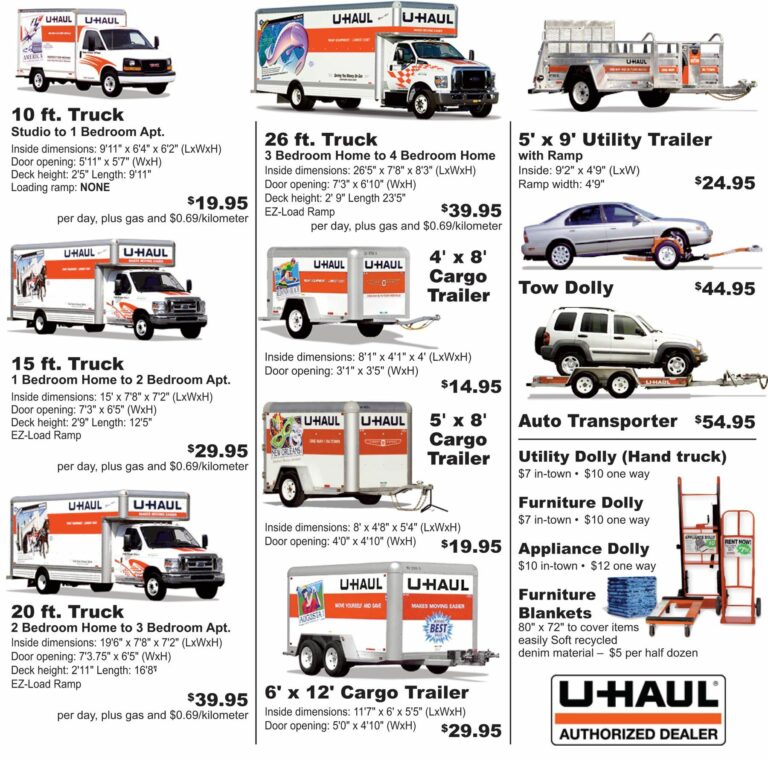Would A Leer Canopy From A Toyota Model Fit A Toyota: The Definitive Guide
Would A Leer Canopy From A Toyota Model Fit A Toyota: The Definitive Guide cars.truckstrend.com
The allure of a truck canopy is undeniable. It transforms your open truck bed into a secure, weather-protected cargo space, perfect for tools, camping gear, or even an impromptu sleeping area. Among the leading manufacturers, Leer stands out for its quality and diverse range of products. However, a common question arises for Toyota truck owners looking to acquire a Leer canopy: "Would a Leer canopy from one Toyota model fit another Toyota model?"
This question often stems from a desire for cost savings, finding a good deal on a used canopy, or simply trying to utilize an existing one from a previous vehicle. Unfortunately, the answer is rarely a straightforward "yes." While both are Toyotas, the precise engineering and dimensional differences between models like the Tacoma, Tundra, and even different generations of the same model, make direct interchangeability a complex and often impossible endeavor. This comprehensive guide will delve into the intricacies of canopy fitment, helping you understand why specific models demand specific canopies, and what to consider if you’re exploring this possibility.
Would A Leer Canopy From A Toyota Model Fit A Toyota: The Definitive Guide
Understanding Canopy Fitment Fundamentals
Before diving into specific Toyota models, it’s crucial to grasp the fundamental principles that govern how a truck canopy fits. A well-fitting canopy is not just about aesthetics; it’s vital for security, weather sealing, and structural integrity.
- Bed Length: This is arguably the most critical dimension. Truck beds come in various lengths (e.g., short bed, standard bed, long bed). A canopy designed for a 6-foot bed will simply not fit a 5-foot or 8-foot bed correctly.
- Bed Width: While less variable than length, bed width can differ significantly between truck models. For instance, a full-size Tundra’s bed is considerably wider than a mid-size Tacoma’s. Even subtle differences of an inch or two can lead to improper sealing, gaps, or an inability to clamp the canopy down securely.
- Bed Rail Design: Modern truck beds feature complex rail designs. Some have integrated rail caps, others have specific contours, and many include utility tracks (like Toyota’s Deck Rail System). A canopy’s base rails must perfectly mate with these features to ensure a snug, watertight seal and proper clamping.
- Cab Height and Contour: For a seamless, aerodynamic look and to prevent water intrusion, the front of the canopy is designed to match the specific height and curvature of the truck’s cab roofline. A mismatch here can result in an unsightly gap, an awkward overhang, or even air turbulence and noise.
- Tailgate Clearance: The rear door of the canopy must clear the truck’s tailgate when opened. Differences in tailgate height or design can impede this function.
- Model Year and Generation Changes: This is a major trap for the unwary. Even within the same Toyota model (e.g., Tacoma), bed dimensions, cab contours, and rail designs can change significantly between generations (e.g., 1st Gen, 2nd Gen, 3rd Gen Tacoma). A Leer canopy designed for a 2nd Gen Tacoma will likely not fit a 3rd Gen Tacoma perfectly, if at all.

Leer Canopies: Precision Engineering for Specific Models

Leer, like other reputable canopy manufacturers, designs and builds its canopies with remarkable precision. Each canopy model (e.g., Leer 100R, 100XR, 180, 122) is not just a generic shape; it’s meticulously engineered to fit a specific truck make, model, and often, a specific bed length and cab style for a defined range of model years.
- Model-Specific Molds: Leer uses dedicated molds for each truck bed configuration. This ensures that the canopy’s base precisely matches the truck’s bed rails, and its front profile aligns with the cab.
- Toyota’s Diverse Lineup: Toyota produces a range of trucks globally, including the mid-size Tacoma (primarily North America), the full-size Tundra (primarily North America), and the Hilux (global). Each of these trucks has distinct dimensions.
- Toyota Tacoma: Known for its versatility, Tacomas come in various cab/bed configurations (Access Cab, Double Cab, Short Bed, Long Bed). The bed dimensions and cab lines vary between generations.
- Toyota Tundra: A larger, full-size truck with significantly wider and often longer beds than the Tacoma. Its cab contour is also distinct.
- Toyota Hilux: While also a mid-size truck like the Tacoma, the Hilux has different bed dimensions and styling cues, especially in its cab profile, as it’s designed for different markets and regulations.

- No Universal Fit: Because of these precise differences, a Leer canopy designed for a Toyota Tacoma will not fit a Toyota Tundra, and vice versa. Similarly, a canopy for a North American Tacoma will not fit a global Hilux.
Factors Influencing Cross-Model Compatibility: The Realities
Let’s break down the factors that make cross-model canopy fitment highly improbable for Toyota trucks:
- Bed Length is Non-Negotiable: If you have a Tundra with a 6.5-foot bed and find a Leer canopy for a Tacoma with a 5-foot bed, it’s a non-starter. The canopy will be too short, leaving a significant portion of your bed exposed. Conversely, a canopy too long will overhang your tailgate, preventing it from closing or simply not fitting on the bed rails.
- Bed Width Discrepancies: A Tundra bed is substantially wider than a Tacoma bed. A Tacoma canopy simply won’t span the width of a Tundra bed, leaving massive gaps. A Tundra canopy would be too wide for a Tacoma, overhanging the sides and preventing proper clamping.
- Cab-to-Canopy Mating: This is often overlooked but crucial for both aesthetics and weather sealing. The front wall of the canopy is shaped to meet the rear window and roofline of the specific truck cab. If the contours don’t match, you’ll have an unsightly gap, poor aerodynamics, and a high likelihood of water leaks into the front of the bed.
- Bed Rail Profiles: Toyota’s Deck Rail System (common on Tacomas and Tundras) integrates tie-down cleats. Leer canopies are designed with specific clamping mechanisms that work with or around these systems. An incorrect canopy might interfere with these rails or not be able to clamp down effectively, compromising security and sealing.
- Generational Leaps: Even within the same model line, truck designs evolve. A 2nd generation (2005-2015) Toyota Tacoma, for example, has different bed dimensions and cab contours than a 3rd generation (2016-present) Tacoma. A Leer canopy perfectly fitted for a 2010 Tacoma will likely not fit a 2020 Tacoma without significant issues.
The "Likely No, But Sometimes Maybe" Scenario (With Heavy Caveats)
While direct cross-model fitment between, say, a Tacoma and a Tundra is unequivocally "no," there are extremely limited and specific scenarios where a "good enough" fit might be achieved, but these always come with compromises:
- Same Model, Different Cab/Bed Configurations (But Identical Bed Dimensions): This is the closest you might get. If, for instance, a Leer canopy is designed for a Tacoma Double Cab Short Bed, and an Access Cab Short Bed of the same generation has the exact same bed dimensions and cab height/contour, then it might fit. However, even here, subtle differences in cab shape could lead to aesthetic imperfections. Always verify bed dimensions down to the millimetre.
- "Good Enough" for Utility, Not Perfect for Aesthetics/Sealing: In very rare cases, if bed length and width are very close (within half an inch), a canopy might physically sit on the rails. However, you’ll almost certainly contend with:
- Gaps: Between the canopy and bed rails, or between the canopy and the cab.
- Poor Sealing: Leading to water and dust intrusion.
- Aesthetic Mismatch: The lines won’t flow, making the canopy look "off."
- Compromised Security: If clamps can’t engage properly.
When it DEFINITELY won’t work:
- Any significant difference in bed length.
- Any significant difference in bed width.
- Major differences in cab height or contour.
- Trying to fit a mid-size truck canopy (Tacoma/Hilux) on a full-size truck (Tundra) or vice versa.
Practical Steps to Assess Fitment
If you’re considering a used Leer canopy and want to determine its potential fit, here’s how to approach it:
- Identify the Exact Canopy and Truck: Get the precise Leer model number (usually on a sticker inside the canopy) and the exact year, make, model, cab style, and bed length of the truck the canopy came from. Do the same for your truck.
- Measure Everything:
- Your Truck Bed: Measure the inside length (at the top rail and at the bed floor), inside width (at the front, middle, and rear), outside width (at the top rails), and the height of your bed rails from the bed floor.
- The Canopy: If possible, measure the inside length and width of the canopy’s base, and the width of its bottom sealing surface.
- Consult Leer Resources: Visit Leer’s official website. They often have detailed fitment guides or dimension charts for their various models, cross-referenced by truck year/make/model. You can also contact a Leer dealer with the canopy’s serial number for specific fitment information.
- Physical Inspection (If Possible): If you can physically bring the canopy to your truck, carefully lower it onto your bed. Look for:
- Even contact along all bed rails.
- No significant overhang or undershoot in length or width.
- A snug fit against the cab.
- Clearance for the tailgate.
- Consider the Trade-offs: Be realistic. A perfect fit is crucial for long-term satisfaction. Minor gaps might be "fixable" with extra weatherstripping, but major mismatches will always be problematic. The cost of professional modifications (cutting, fiberglass work) often outweighs the savings of a cheap, ill-fitting used canopy.
Challenges and Potential Solutions
Attempting to force an ill-fitting Leer canopy onto a Toyota truck typically leads to a host of problems:
- Gaps and Leaks: The most common issue. Water, dust, and even exhaust fumes can enter the bed, damaging cargo.
- Solution: Extensive use of weatherstripping, silicone sealant. This is often a band-aid, not a permanent fix.
- Aesthetics: A canopy that doesn’t match the truck’s lines looks awkward and can detract from the vehicle’s appearance and resale value.
- Security Issues: If the clamps can’t properly engage or the canopy doesn’t sit flush, it can be easily pried open or even come loose at speed.
- Damage to Truck Bed: Improperly seated or clamped canopies can rub and wear down the truck’s bed rails over time.
- Cost of Modification: While theoretically possible to modify a fiberglass canopy, it’s a specialized job requiring expertise in fiberglass repair, painting, and often, custom fabrication. The cost can quickly escalate, negating any savings from buying a used unit.
Practical Advice and Actionable Insights
- Prioritize Correct Fitment: For the best long-term experience, security, and weather protection, always opt for a Leer canopy specifically designed for your truck’s exact year, make, model, and bed length.
- Measure Thrice, Buy Once: If buying used, do your homework. Get precise measurements of both the canopy and your truck bed.
- New vs. Used: While a new Leer canopy is an investment, it guarantees a perfect fit, warranty, and professional installation. The potential headaches and hidden costs of trying to make a mismatched used canopy fit often make the initial savings negligible.
- Don’t Compromise on Sealing: Water and dust intrusion can ruin cargo. A leaky canopy is more of a liability than an asset.
- Consult a Professional: If you’re unsure, visit a Leer dealer or a reputable truck accessory shop. They have the expertise and resources to verify fitment.
Concluding Summary
In conclusion, the question "Would a Leer canopy from one Toyota model fit another Toyota model?" is almost universally answered with a "no" when referring to different models (e.g., Tacoma to Tundra) or different generations of the same model. Leer canopies are precision-engineered for specific truck dimensions, bed rail designs, and cab contours. Attempting to force a fit will inevitably lead to compromised aesthetics, poor weather sealing, security issues, and potential damage, often costing more in the long run than investing in the correct canopy from the start.
While the appeal of a bargain is strong, the best approach for a Leer canopy is to ensure it is designed for your exact Toyota truck model and year. This guarantees optimal performance, security, and the integrated, factory-like appearance you expect from a quality truck accessory.
Estimated Costs and Considerations for Leer Canopies (General)
The following table provides a general overview of costs and considerations. Specific prices will vary based on Leer model, features (windows, racks, lighting), dealer, and location. Trying to adapt an incorrect canopy incurs "modification costs" which are highly variable and often impractical.
| Category | Estimated Cost Range (USD) | Key Considerations |
|---|---|---|
| New Leer Canopy (Correct Fit) | $2,000 – $4,000+ | Perfect fit, warranty, professional installation, custom features, color matching. |
| Used Leer Canopy (Correct Fit) | $800 – $2,000 | Significant savings, but verify condition, exact fit (model/year), and original features. |
| Used Leer Canopy (Incorrect Model/Year) | $200 – $800 (purchase) | High risk of non-fitment. Price is low because it’s difficult to sell. |
| Professional Modification Attempts | $500 – $2,000+ | Highly specialized work (fiberglass, paint). Often not feasible or cost-effective. |
| DIY Modification Supplies | $50 – $200 | Weatherstripping, sealant, clamps. For minor issues only. |
| Professional Installation (New/Used) | $100 – $300 | Ensures proper sealing, clamping, and wiring. Recommended. |
| Shipping a Canopy | $300 – $800+ | Can be very expensive due to size. Consider local pickup. |
| Painting to Match Truck | $400 – $800+ | If used canopy color doesn’t match. |
Frequently Asked Questions (FAQ)
Q1: Can a Leer canopy designed for a Toyota Tacoma fit a Toyota Tundra?
A1: No, absolutely not. The Tundra’s bed is significantly wider and often longer than a Tacoma’s, and the cab contours are completely different.
Q2: Will a Leer canopy for a long bed Tacoma fit a short bed Tacoma?
A2: No. A long bed canopy will be too long and will overhang the tailgate of a short bed truck, preventing it from closing properly.
Q3: Can a Leer canopy for a short bed Tacoma fit a long bed Tacoma?
A3: It will physically sit on the bed rails, but it will be too short, leaving a large gap at the rear of the long bed. This would compromise security and weather protection.
Q4: Are all Leer canopies for a specific Toyota model year interchangeable (e.g., a 2010 Tacoma canopy on a 2018 Tacoma)?
A4: Not necessarily. Toyota often introduces new generations of its trucks (e.g., 2nd Gen Tacoma vs. 3rd Gen Tacoma) where bed dimensions, rail designs, and cab contours change. Always verify the exact fitment for your specific model year and generation.
Q5: What’s the biggest risk of trying to use an ill-fitting Leer canopy?
A5: The biggest risks are significant water leaks and dust intrusion into your truck bed, compromised security due to improper clamping, and poor aesthetics that can detract from your truck’s appearance and resale value.
Q6: Is it worth modifying a Leer canopy to fit a different Toyota model?
A6: Generally, no. The cost of professional fiberglass work, painting, and custom fabrication often far exceeds the savings from buying a cheap, ill-fitting used canopy. It’s usually more cost-effective and less problematic to purchase the correct canopy for your truck.






